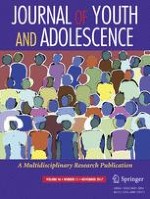15-05-2017 | Empirical Research
Self- and Peer-Identified Victims in Late Childhood: Differences in Perceptions of the School Ecology
Gepubliceerd in: Journal of Youth and Adolescence | Uitgave 11/2017
Log in om toegang te krijgenAbstract
Patterns of adjustment for youth victimized by peers vary depending on whether youth are identified as victims through self-reports, peer-reports, or both. In order to provide more targeted strategies that may help mitigate negative consequences associated with specific victimization groups, more information is needed about how these youth perceive their school ecology (bullying and academic ecology), their feelings of school belonging, and their valuing of school. Based on the convergence of self- and peer-reports of victimization, we identified four victim groups from a sample of students in 5th grade classrooms (N = 1360; 52.8% girls, 53.1% White, 34.6% Black or Hispanic, 12.2% Native American, Asian, or other) using Latent Profile Analysis (LPA): convergent victims (high self- and peer-reports), self-identified victims (high self-, low peer-reports), peer-identified victims (low self-, high peer-reports), and nonvictims (low self- and peer-reports). Convergent victims’ perceptions were similar to nonvictims with key differences being convergent victims’ greater willingness to protect peers being bullied but lower feelings of school belonging compared to nonvictims. Peer-identified and self-identified victims perceived differences in the bullying and academic ecology including peer-identified victims’ greater willingness to protect peers and expectations for more peers to encourage bulling against them compared to self-identified victims. However, both peer- and self-identified victims perceived greater emotional risk of participating in class and had lower feelings of school belonging compared to nonvictims. Implications for supporting youth with divergent self- and peer-reported victimization status as they transition to middle school are discussed.
